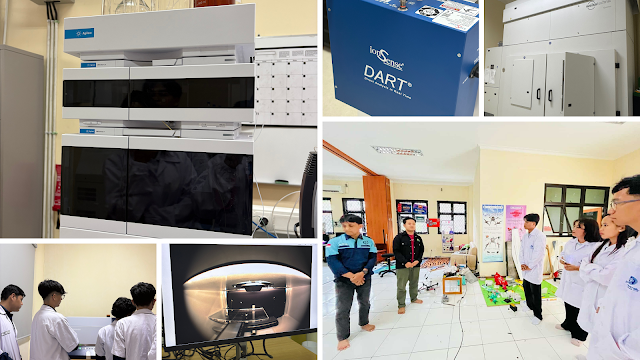Unveiling New Currents: Our Second Day at IPBU as Exchange Students in Bogor, Indonesia
Our second day at IPB University (IPBU) in Bogor, Indonesia, marked the official start of our lectures and deeper immersion into the academic environment here. After a whirlwind first day filled with introductions and exploration, we were eager to dive into the curriculum and continue discovering what IPBU has to offer. This day truly set the tone for what promises to be an incredible experience.
We began our day at the IPBU fisheries department, where we kicked off our lectures with an in-depth look at aquaculture. The lecture was both informative and eye-opening, focusing on the early stages of fish life, particularly fish larvae, and the essential role that proper nutrition plays in their growth and development. It was fascinating to explore how the aquaculture industry balances ecological sustainability with food production. The lecture provided a solid foundation for understanding the complexity of the field, and we were excited to put this new knowledge to use in practical settings.
Following the lecture, we participated in a hands-on practicum session where we helped clean the fish pond area in preparation for cultivating plankton. This experience wasn’t just about getting our hands dirty—it gave us a deeper appreciation for the detailed care that goes into maintaining a healthy aquatic ecosystem. Working alongside local students, we fed a variety of fish, including catfish, alligator gar, and koi, which gave us firsthand insight into the careful attention required to nurture these fish from larvae to fully grown species.
After our practicum, we were invited to join the students for a tour of the IPBU Dramaga Campus, where we visited the Advanced Research Laboratory (ArLaB). The labs at ArLaB are among the best we’ve seen, featuring advanced equipment that supports research not only for aquaculture and agriculture but also for other scientific fields. Many of the tools here have been made possible through partnerships with international institutions, and we were excited to see these resources in action.
One of the most impressive machines we encountered was the Micro X-Ray Fluorescence (Micro XRF) machine. This tool is capable of analyzing the chemical composition of dry matter without the need for pulverization. By bombarding samples with X-rays, the machine causes the materials to emit fluorescent X-rays, which are then used to determine the elements present in the sample. This non-destructive method is a great advantage for analyzing materials without changing their form, making it useful across a wide range of scientific fields.
We were also introduced to the DART (Direct Analysis in Real Time) machine, which is only available at IPBU in Indonesia. The DART machine allows for real-time chemical analysis of samples without any preparation. It ionizes samples in the open air and analyzes the ions to determine their chemical composition. This innovative technology speeds up the process of chemical analysis, making it incredibly efficient for researchers dealing with complex mixtures.
Another key piece of equipment we saw was the Liquid Chromatography machine. Liquid chromatography is used to separate and analyze compounds within a liquid sample. This technique is essential for studying complex mixtures, and it plays a critical role in research areas such as biochemistry, pharmacology, and environmental science.
Beyond these powerful machines, we also got a glimpse of a 3D microscope that provides highly detailed images of biological samples. There’s even a machine capable of rejuvenating plant samples that aren’t fresh anymore, making them perfect for research purposes. These tools, along with the other advanced equipment, are central to ensuring that students at IPBU have access to the latest technologies to support their research.
We also visited the robotics lab, where students are working on precision agriculture projects. One such project focuses on creating robots to monitor environmental factors like temperature and humidity—critical factors for crops like melons. It’s fascinating to see how robotics is being integrated into agriculture to help improve sustainability and efficiency.
The level of investment in these facilities is impressive. The equipment at ArLaB, such as the Micro XRF and DART machines, is expensive, with some machines valued at millions of pesos. However, these high-end tools are made available to students, which reflects IPBU’s commitment to providing the best possible resources for research and education. The opportunity to work with such advanced technology is something we don’t take for granted, and it’s exciting to think about how these resources will enhance our learning experience.
Reflecting on our second day here, we are both impressed and inspired by the resources and opportunities at IPBU. The combination of advanced equipment, knowledgeable faculty, and hands-on learning makes this an ideal environment for academic growth. We’re excited to see where the rest of our time here will take us and look forward to all the learning and experiences yet to come.





Comments
Post a Comment